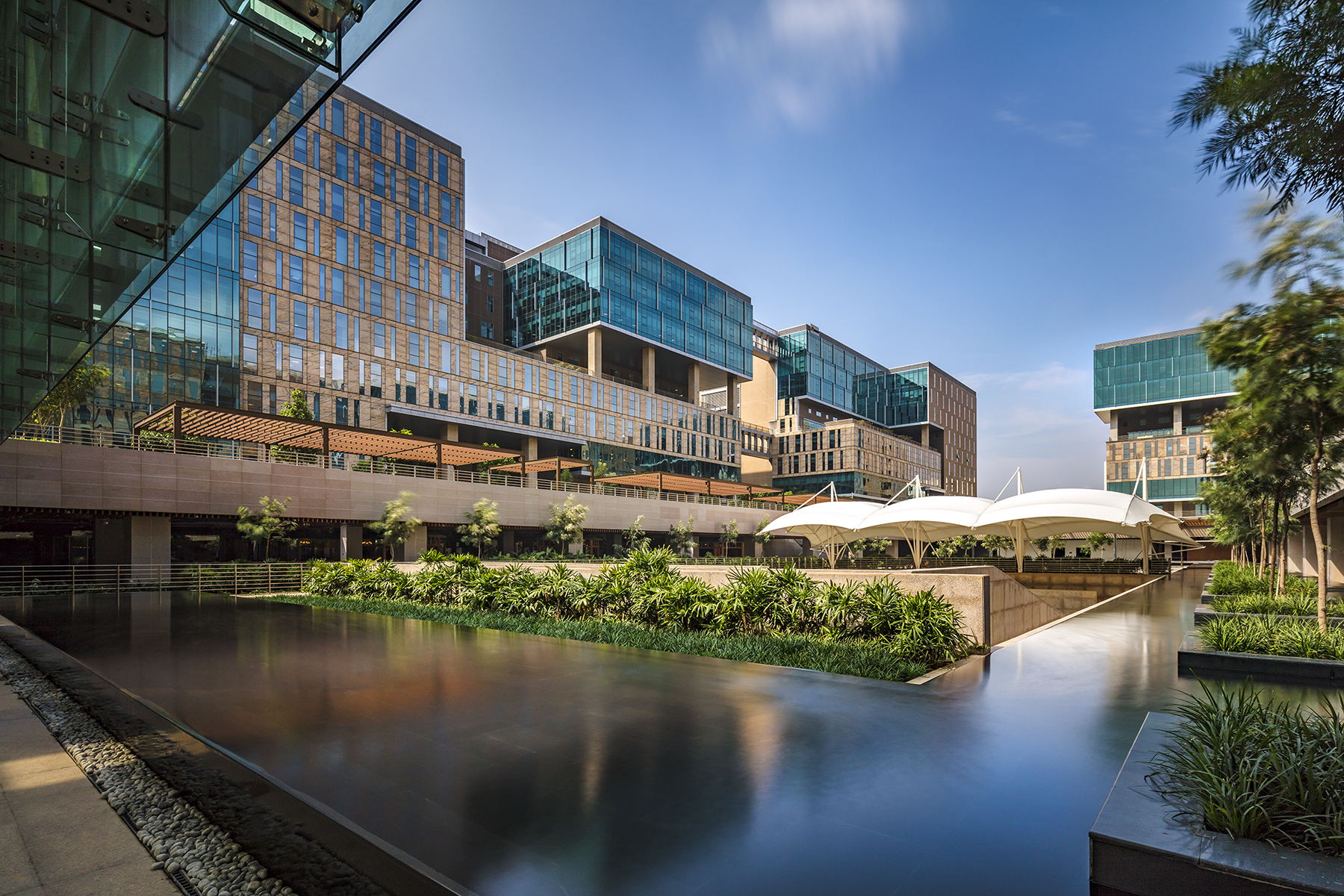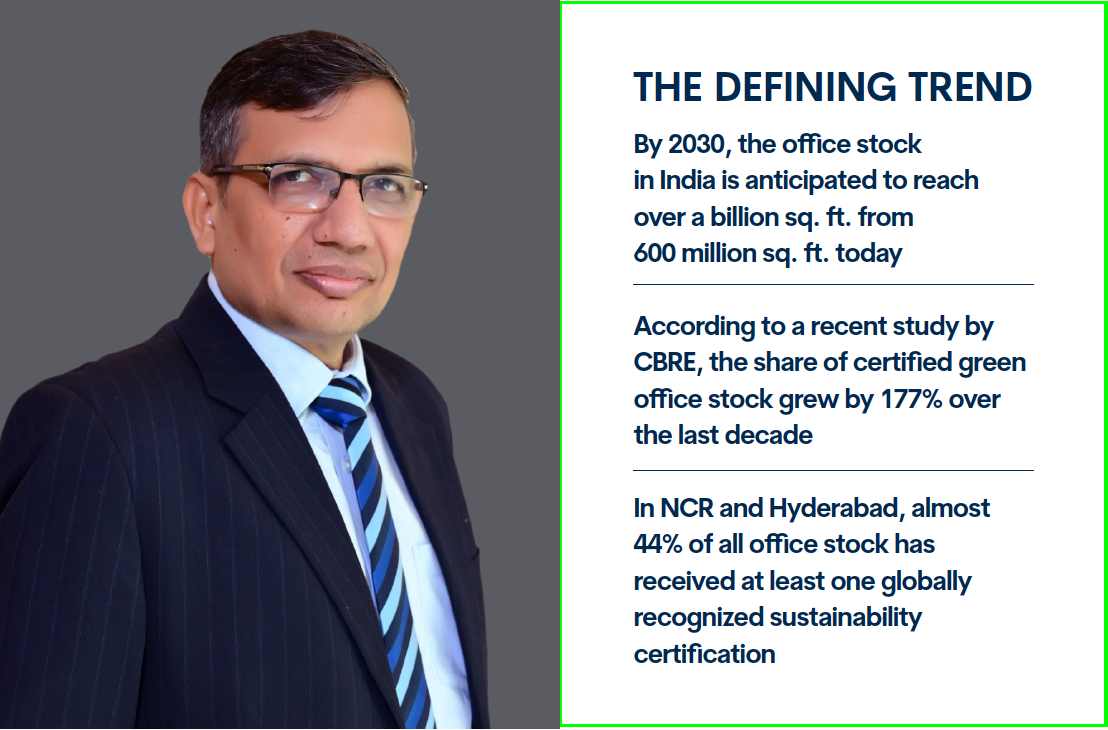
The buildings of tomorrow will be energy-efficient, consume less water and enhance biodiversity, stated Alok Aggarwal, Managing Director & Chief Executive Officer, Brookfield Properties | India, in his interaction with ET Edge. Here we highlight his four key insights
Buildings can be more than just physical structures; they can be agents of positive change. The industry will have to make a rapid and consistent transition to adopt sustainable design, construction and operations. Green buildings are climate-resilient, consume less water, optimally use energy, conserve natural resources, generate less waste, enhance biodiversity, and ensure healthier living spaces while providing overall
well-being.
Environmental, Social and Governance (ESG) frameworks are being formalized and adopted. Stakeholders across the investment lifecycle of real estate are increasingly incorporating ESG disclosures in their decision-making. This increased visibility is making climate resilience, community development and employees’ health and well-being strategic priorities among corporate real estate leaders.
Today we not only look at how sustainability has been incorporated from design through end-of-life operation but also how it interacts with the greater urbanscape of the community. Does the urban infrastructure around the building support individuals to reduce their carbon footprint daily? Developers are working with city leaders, urban planners, and ride-share providers to ensure that the residents or occupants of our real estate assets be better connected to the city.
Developers are not only focusing on the aesthetics and functionality of a building, but also on “Development Intelligence” that aligns them to the prevailing environmental conditions and occupancy. Building Management Systems and Digital Twins are enabling operators to move from responding to predicting the needs of the occupants. Sensors and digital controls have made collecting and reporting progress seamless across stakeholders.
